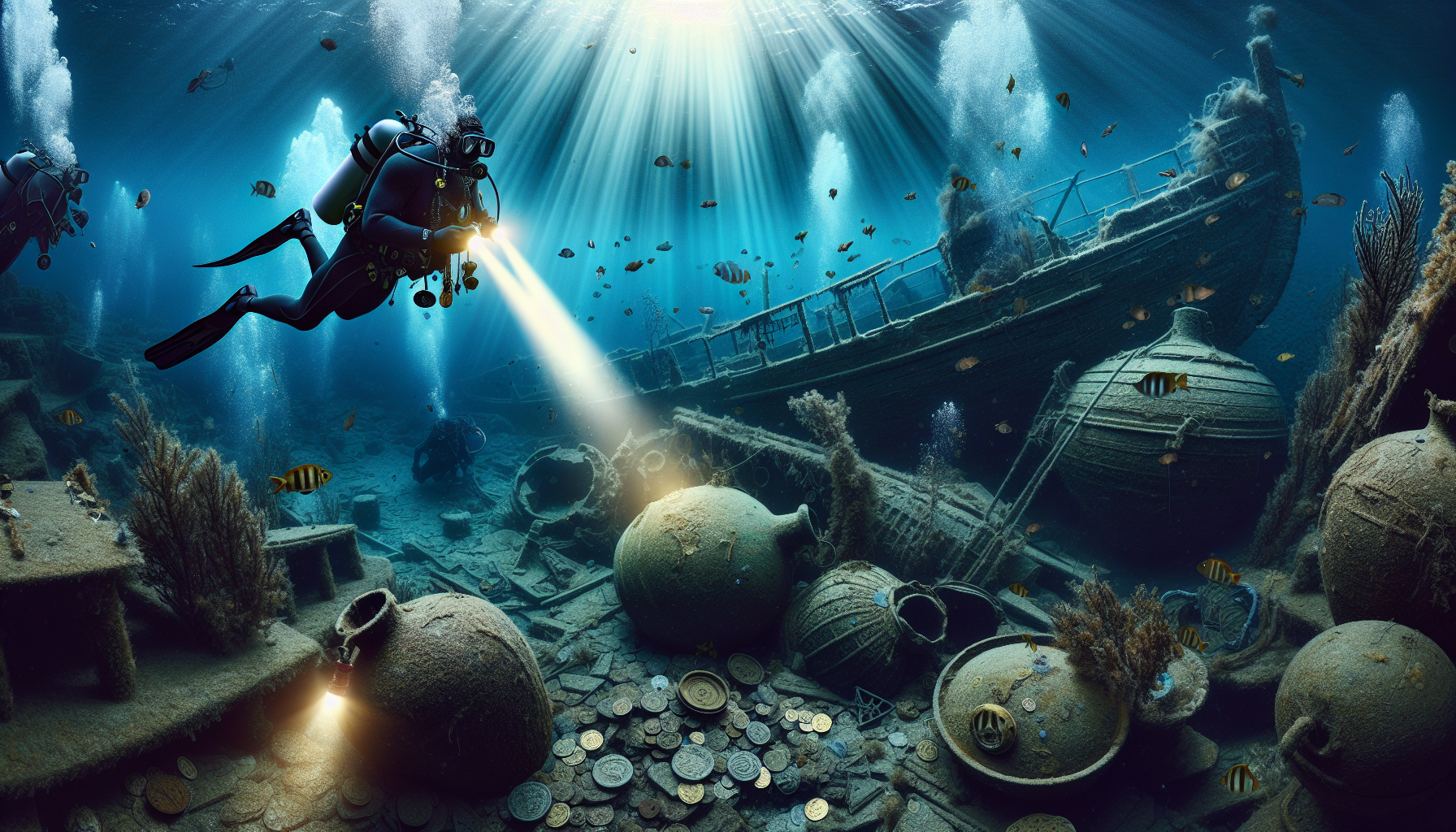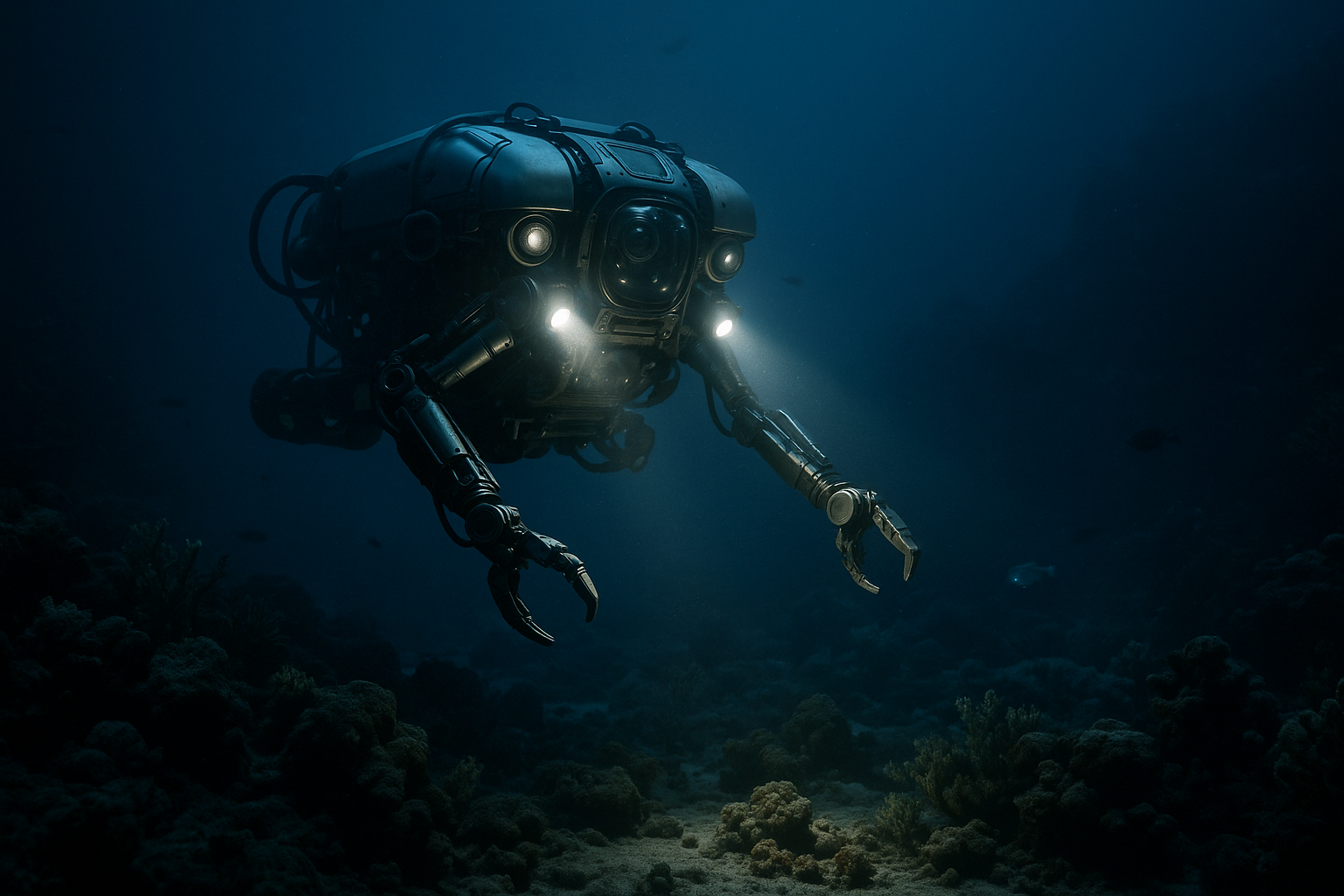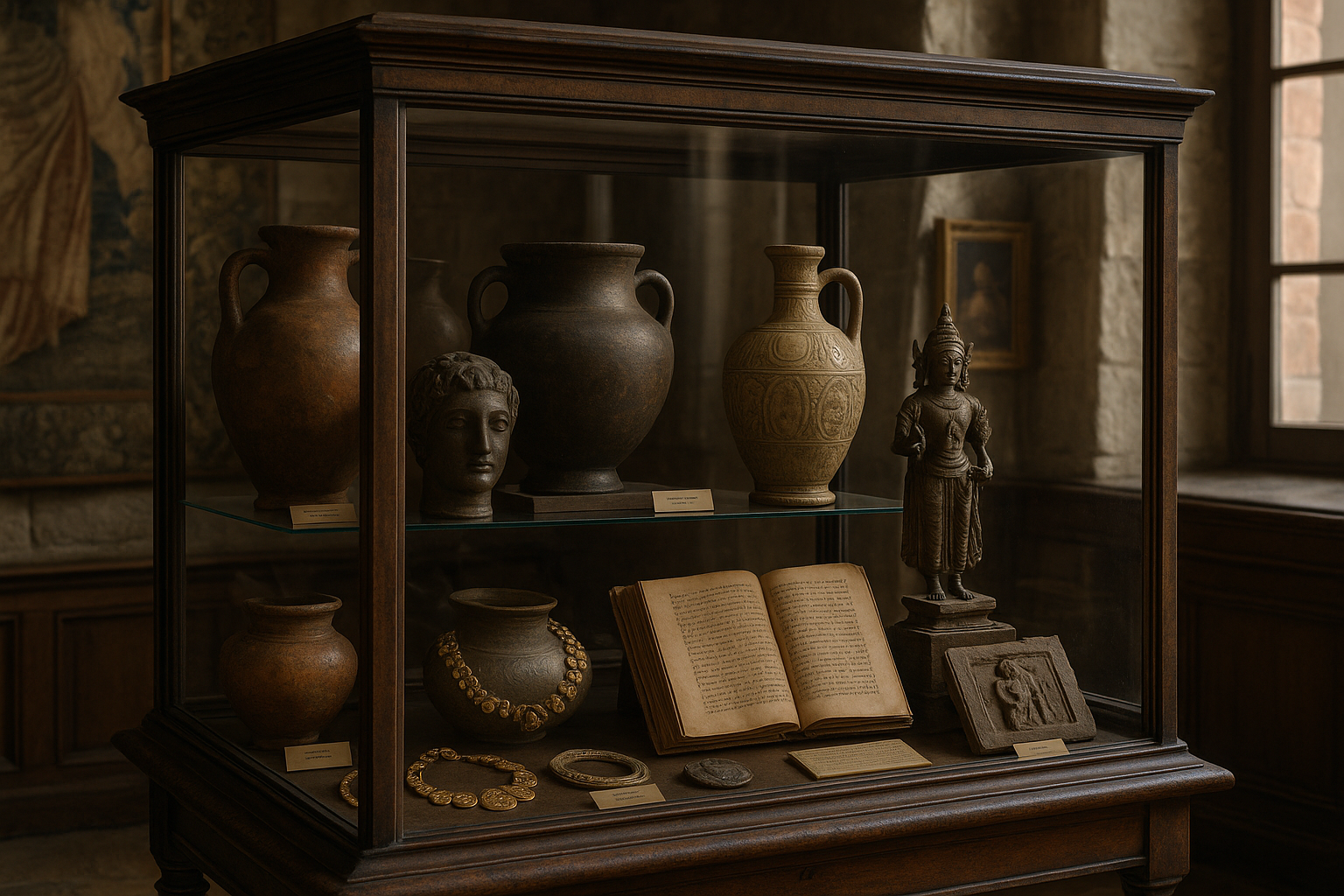Diving beneath the waves into the enigmatic embrace of the ocean is like unlocking a time capsule, where history is preserved in the watery depths, waiting patiently to be rediscovered. 🌊 Welcome to the captivating realm of underwater archaeology, a field that combines the allure of exploration with the meticulous study of human history submerged beneath the sea. Whether you are an experienced diver or a curious history enthusiast, the world of underwater archaeology training offers a thrilling journey into the past, allowing you to unearth the secrets of ancient civilizations, shipwrecks, and submerged cities. In this article, we will dive deep into the fascinating aspects of underwater archaeology training, unveiling its mysteries and highlighting the skills and techniques that make it possible to connect with our submerged past.
At first glance, underwater archaeology might seem like a pursuit reserved for adventurers and experts, but it’s a discipline that invites everyone to uncover the layers of history hidden beneath the ocean’s surface. With each dive, archaeologists have the opportunity to encounter relics from bygone eras, from the remnants of ancient trade routes to artifacts from long-lost ships that tell stories of exploration, conflict, and cultural exchange. The field of underwater archaeology is constantly evolving, propelled by advancements in technology and techniques that make it possible to explore even the most challenging underwater environments. In this article, we’ll explore how underwater archaeology training equips enthusiasts and professionals with the skills needed to navigate this captivating world, revealing the secrets that lie beneath the waves.
Underwater archaeology is more than just a quest for treasure; it’s a scientific pursuit that requires a unique blend of skills and knowledge. Training programs in this field offer participants the chance to learn essential diving techniques, artifact preservation methods, and advanced research strategies. We will delve into the importance of understanding underwater environments and the role of technology, such as remote sensing and photogrammetry, in mapping and documenting submerged sites. Additionally, we’ll explore the interdisciplinary nature of underwater archaeology, where collaboration with marine biologists, historians, and conservationists enriches the study and preservation of underwater cultural heritage. By the end of this article, you’ll have a comprehensive understanding of what it takes to become an underwater archaeologist and the impact this field has on our understanding of human history.
Throughout this article, we’ll also share compelling stories from renowned underwater archaeologists who have made groundbreaking discoveries that have reshaped our understanding of the past. From the sunken treasures of ancient Egypt to the haunting remains of World War II battleships, these tales of exploration and discovery will inspire and captivate you. 🌍 The world beneath the waves holds an incredible wealth of knowledge, waiting to be uncovered by those who dare to explore its depths. So, join us on this journey as we unlock the secrets of the past with underwater archaeology training, and perhaps you’ll find yourself inspired to take the plunge into this mesmerizing field where history and adventure converge.
The Depths of Time: Understanding Underwater Archaeology
Underwater archaeology is a fascinating field that allows us to explore the mysteries of our past hidden beneath the waves. This specialized branch of archaeology deals with the study of submerged human activity, be it ancient shipwrecks, sunken cities, or prehistoric artifacts. With the vast majority of our planet covered in water, the potential for discoveries is immense. Each expedition provides invaluable insights into historical events, cultures, and technologies that have long been buried at sea. 🌊
One of the most alluring aspects of underwater archaeology is its ability to preserve historical artifacts in a way that terrestrial archaeology cannot. The ocean’s conditions can encapsulate materials, safeguarding them from the erosive effects of air and time. This preservation opens a window into the past that might otherwise be inaccessible. Imagine stumbling upon a ship from the Roman Empire, its cargo still intact, offering a snapshot of ancient trade routes and daily life. These discoveries not only enrich our understanding of history but also challenge our preconceived notions of past civilizations.
Training in underwater archaeology involves mastering a unique set of skills. Unlike traditional archaeology, which often requires a strong foundation in excavation and analysis techniques, underwater archaeology demands proficiency in diving and the use of specialized equipment. This can include everything from basic scuba gear to advanced sonar and remote-operated vehicles (ROVs). The field also requires an understanding of marine biology and geology, as these elements can greatly affect the preservation and accessibility of submerged sites. To get a sense of the kind of training involved, watch the video below by the National Geographic Channel: “Underwater Archaeology: The Ocean’s Time Capsule”.
Training for the Deep: Skills and Techniques
Underwater archaeology training is not for the faint of heart. It demands a high level of physical fitness, technical expertise, and mental resilience. The first step for any aspiring underwater archaeologist is to become a certified diver. This certification ensures that individuals are equipped with the skills needed to safely navigate underwater environments. Dive training covers a range of essential skills, from buoyancy control to emergency procedures, ensuring that archaeologists can perform their tasks efficiently and safely.
Beyond basic diving skills, underwater archaeologists must become proficient with various tools and technologies. For example, many projects rely on sonar mapping to locate and assess potential sites before any excavation begins. This technology allows archaeologists to create detailed images of the seafloor, helping them identify promising areas for further exploration. Other essential tools include underwater cameras and lights, which help document findings and provide valuable visual records for later analysis.
In addition to technical skills, underwater archaeologists must possess a strong understanding of the legal and ethical considerations involved in their work. International laws and agreements govern the excavation and preservation of underwater sites, and archaeologists must navigate these regulations carefully. These laws are in place to protect cultural heritage and ensure that findings are shared with the global community. To better understand the skills required for underwater archaeology, take a look at the table below, which outlines some of the key competencies and tools used in the field:
| Skill/Tool | Description |
|---|---|
| Diving Certification | Ensures safe and efficient underwater navigation and operations. |
| Sonar Mapping | Utilized to locate and assess potential archaeological sites on the seabed. |
| Underwater Photography | Documents findings and provides visual records for analysis and reporting. |
| Legal Knowledge | Understanding of international laws and agreements related to underwater archaeology. |
The Fascinating Finds: Discoveries in Underwater Archaeology
The field of underwater archaeology has led to some of the most intriguing discoveries of our time. From ancient shipwrecks laden with treasure to entire cities lost to the sea, these finds captivate the imagination and offer new insights into human history. One of the most famous underwater discoveries is the Antikythera mechanism, an ancient Greek device that is often considered the world’s first analog computer. Found in a shipwreck off the coast of the Greek island Antikythera, this device has fascinated researchers since its discovery in the early 20th century.
Another remarkable find is the lost city of Thonis-Heracleion, once a thriving hub of commerce and trade located near the mouth of the Nile. Submerged by natural disasters and the rising sea levels of antiquity, this ancient city remained hidden beneath the waves for centuries. Its discovery in 2000 by marine archaeologist Franck Goddio was a monumental achievement, revealing a wealth of artifacts that have provided a detailed glimpse into life in ancient Egypt.
Underwater archaeology not only unearths treasures of gold and bronze but also of knowledge. The data collected from these sites contribute to our understanding of ancient trade routes, cultural interactions, and technological advancements. By analyzing artifacts, archaeologists can piece together the story of how ancient civilizations interacted with each other and their environments. Check out this fascinating video by the History Channel that dives into some of the most significant underwater discoveries: “Secrets of the Deep: Underwater Archaeology”.
Preservation and Conservation: Protecting Our Underwater Heritage
Preserving underwater archaeological sites is a complex and challenging task. The marine environment, while offering unique preservation conditions, can also pose significant threats to the integrity of artifacts. Saltwater, marine organisms, and shifting sediments can all contribute to the deterioration of materials over time. As a result, conservation efforts are critical to ensure that these invaluable cultural resources remain intact for future study and appreciation.
Conservation strategies often begin with careful documentation and assessment of a site’s condition. This includes creating detailed maps and photographs of the area, as well as collecting samples for laboratory analysis. These initial steps help conservators understand the specific challenges a site faces and develop targeted strategies to mitigate deterioration. Techniques such as desalination, which removes salt from artifacts, and the use of protective coatings to shield materials from corrosive elements, are just a few of the methods employed by conservationists.
In addition to physical preservation, there is an increasing emphasis on the digital preservation of underwater archaeological sites. Advances in technology have made it possible to create highly detailed 3D models of sites and artifacts, allowing researchers and the public to explore these areas virtually. This not only aids in preservation efforts but also makes underwater archaeology more accessible to a broader audience. For an in-depth look at how digital technology is revolutionizing conservation, watch the following video by the Digital Archaeological Archive: “Digital Preservation in Underwater Archaeology”.
The Future of Underwater Archaeology: Challenges and Opportunities
The future of underwater archaeology is both promising and fraught with challenges. On one hand, technological advancements are opening up new possibilities for exploration and discovery. Improved diving equipment, advanced imaging technologies, and sophisticated data analysis tools are making it easier and safer for archaeologists to explore the depths. However, these same technologies also present new ethical dilemmas, such as the potential for looting and the commercialization of archaeological finds.
Climate change poses another significant challenge to underwater archaeology. Rising sea levels and increasing ocean temperatures threaten not only the preservation of existing sites but also the potential discovery of new ones. As coastal areas become more vulnerable to erosion and flooding, the risk of losing invaluable cultural heritage increases. Archaeologists must work quickly and collaboratively with governments and organizations worldwide to develop strategies that address these environmental threats.
Despite these challenges, the field of underwater archaeology offers exciting opportunities for collaboration and education. Partnerships between archaeologists, local communities, and educational institutions can foster greater understanding and appreciation for underwater heritage. By engaging the public through outreach programs, documentaries, and interactive exhibits, archaeologists can inspire future generations to take an active role in preserving our shared history. For those interested in learning more about the future of underwater archaeology, explore this informative video by the Archaeological Institute of America: “The Next Wave: Innovations in Underwater Archaeology”.

Conclusion
Unlocking the mysteries of our past through underwater archaeology is a fascinating journey that takes us beneath the waves to explore the remnants of ancient civilizations and long-lost artifacts. This article has delved into the essential components of underwater archaeology training, highlighting its significance in unraveling the secrets of human history submerged for centuries. As we conclude this enlightening exploration, let’s recapitulate the main points covered, emphasizing the critical importance of this field and encouraging readers to engage further with this captivating subject.
Throughout this article, we’ve explored the rigorous and specialized training required for underwater archaeologists. This training is not only a testament to the dedication and passion of those who pursue it but also to the meticulous methods needed to excavate, document, and preserve underwater sites. The importance of interdisciplinary skills, including diving proficiency, knowledge of archaeological techniques, and an understanding of marine environments, has been underscored as fundamental for any aspiring underwater archaeologist. This blend of skills ensures that the treasures of the past are unearthed responsibly and scientifically.
Moreover, we’ve highlighted the technological advancements that have revolutionized underwater archaeology. Tools such as sonar mapping, remotely operated vehicles (ROVs), and advanced diving equipment have expanded our capacity to explore deeper and more challenging sites than ever before. These innovations not only enhance our ability to locate and study underwater sites but also minimize the risk to human divers, making underwater archaeology more accessible and safer.
The article also shed light on some of the most significant underwater archaeological discoveries that have shaped our understanding of history. From ancient shipwrecks that reveal the secrets of maritime trade to submerged settlements offering a glimpse into prehistoric life, each discovery adds a valuable piece to the complex puzzle of our past. These findings underscore the profound impact of underwater archaeology in enriching our historical narratives and offering new perspectives on human civilization.
The importance of underwater archaeology extends beyond academic interest; it plays a crucial role in heritage preservation and education. As coastal and underwater sites face threats from climate change, pollution, and unauthorized salvaging, the role of trained archaeologists becomes increasingly vital. Their expertise ensures that these irreplaceable cultural resources are documented, preserved, and protected for future generations. Moreover, public engagement and education initiatives associated with underwater archaeology foster a deeper appreciation and understanding of our shared heritage, encouraging stewardship and conservation efforts.
In reflecting on the themes explored in this article, the significance of underwater archaeology becomes abundantly clear. This field not only enriches our understanding of history but also connects us to the broader narrative of human existence, highlighting the shared experiences and innovations that have shaped our world. As we continue to explore and discover, underwater archaeology remains a testament to human curiosity, resilience, and the relentless pursuit of knowledge.
We invite readers to engage further with this captivating field. Whether you’re inspired to pursue a career in underwater archaeology, participate in citizen science initiatives, or simply learn more about our submerged past, there are numerous ways to get involved. Share this article with friends and family to spread awareness of the fascinating work being done beneath the waves 🌊. Engage in discussions, leave your thoughts in the comments, and consider how you might contribute to the preservation of our underwater heritage.
For those interested in further exploration, numerous resources and organizations offer opportunities to learn and participate. The Nautical Archaeology Society (https://www.nauticalarchaeologysociety.org/) and UNESCO’s Underwater Cultural Heritage Unit (https://www.unesco.org/en/underwater-cultural-heritage) provide valuable information and avenues for involvement in underwater archaeology. We encourage you to explore these resources, broaden your understanding, and perhaps even discover a new passion.
In conclusion, the secrets of the past lie waiting beneath the waves, ready to be uncovered by those with the curiosity and dedication to seek them out. Underwater archaeology training opens the door to this hidden world, offering a unique and invaluable lens through which to view our collective history. As we continue to explore, protect, and learn from these submerged landscapes, we not only honor the past but also illuminate the path forward. Dive deep, stay curious, and let the discoveries of underwater archaeology inspire you to look beyond the horizon. 🌍✨
Gabriel is a visual storyteller and archival artist whose lens dives deep into the submerged echoes of underwater archaeology. Through sediment and salt, Gabriel traces forgotten histories — those whispered by shipwrecks, eroded artifacts, and drowned cities.
Compelled by the allure of ancient trade routes, submerged sanctuaries, and the ocean’s quiet possession of the past, Gabriel’s work charts a poetic cartography of the sea’s memory. From coral-laced amphorae to oxidized anchors, every object he illuminates becomes part of a narrative where time collapses and the past drifts close.
His creations are more than documentation — they are visual meditations on absence and endurance. Gabriel blends design, historical research, and storytelling to surface the quiet resilience of maritime remnants. He captures the textures of time: rust that blooms like algae, stone that crumbles into myth, and silence that speaks louder than ruin.
Through curated imagery, thoughtful essays, and reconstructed impressions of what lies beneath, Gabriel invites viewers to see underwater ruins not as remnants, but as thresholds to wonder — places where memory is refracted through water, and where myth lingers like salt on stone.
His practice is a tribute to:
The unknowable depths of civilizations consumed by tides
The fragile endurance of objects left behind
The enduring dialogue between water, stone, and remembrance
If your soul drifts toward the relics of lost maritime empires, the mythic pull of coastal rituals, or the ghostly grace of sunken vessels, Gabriel welcomes you to descend into a space where history sleeps in sediment — but dreams in currents.




